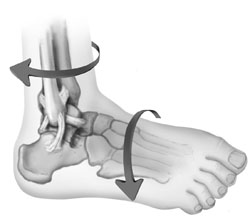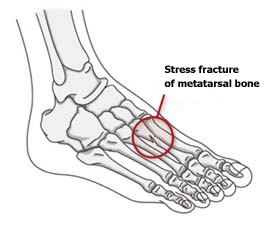
High School Sports Injuries
This article is also available in Spanish: Lesiones deportivas en la secundaria.
Every year, millions of teenagers participate in high school sports. An injury to a high school athlete can be a significant disappointment for the teen, the family, and the coaches. The pressure to play can lead to decisions that may lead to additional injury with long-term effects. High school sports injuries can cause problems that require surgery as an adult, and may lead to arthritis later in life.
When a sports injury occurs, it is important to quickly seek proper treatment. To ensure the best possible recovery, athletes, coaches, and parents must follow safe guidelines for returning to the game.
The Adolescent AthleteTeenage athletes are injured at about the same rate as professional athletes, but injuries that affect high school athletes are often different from those that affect adult athletes. This is largely because high school athletes are often still growing.
Growth is generally uneven: Bones grow first, which pulls at tight muscles and tendons. This uneven growth pattern makes younger athletes more susceptible to muscle, tendon, and growth plate injuries.
Types of High School Sports InjuriesInjuries among young athletes fall into two basic categories: overuse injuries and acute injuries. Both types include injuries to the soft tissues (muscles and ligaments) and bones.
Acute Injuries
Acute injuries are caused by a sudden trauma. Examples of trauma include collisions with obstacles on the field or between players. Common acute injuries among young athletes include contusions (bruises), sprains (a partial or complete tear of a ligament), strains (a partial or complete tear of a muscle or tendon), and fractures.
 A twisting force to the lower leg or foot is a common cause of ankle fractures, as well as ligament injuries (sprains).
Reproduced and modified with permission from The Body Almanac. © American Academy of Orthopaedic Surgeons, 2003.
A twisting force to the lower leg or foot is a common cause of ankle fractures, as well as ligament injuries (sprains).
Reproduced and modified with permission from The Body Almanac. © American Academy of Orthopaedic Surgeons, 2003.
Overuse Injuries
Not all injuries are caused by a single, sudden twist, fall, or collision. Overuse injuries occur gradually over time, when an athletic activity is repeated so often, parts of the body do not have enough time to heal between playing.
Overuse injuries can affect muscles, ligaments, tendons, bones, and growth plates. For example, overhand pitching in baseball can be associated with injuries to the elbow. Swimming is often associated with injuries to the shoulder. Gymnastics and cheerleading are two common activities associated with injuries to the wrist and elbow.
Stress fractures are another common overuse injury in young athletes. Bone is in a constant state of turnover—a process called remodeling. New bone develops and replaces older bone. If an athlete's activity is too great, the breakdown of older bone occurs rapidly, and the body cannot make new bone fast enough to replace it. As a result, the bone is weakened and stress fractures can occur—most often in the shinbone and bones of the feet.

Catastrophic Sports Injuries
Many sports, especially contact sports, have inherent dangers that put young athletes at special risk for severe injuries. Even with rigorous training and proper safety equipment, children are at risk for severe injuries to the head and neck with damage to the brain or spinal cord.
Catastrophic injuries have been reported in a wide range of sports, including ice hockey, wrestling, football, swimming, soccer, pole vaulting, cheerleading, and gymnastics. It is important for coaches, parents, and athletes to be aware of the guidelines and regulations developed for each sport to prevent head and neck injury.
Concussion
Concussions are mild traumatic brain injuries. They are caused by a blow to the head or body that results in the brain moving rapidly back and forth inside the skull.
Although some sports have higher instances of concussion—such as football, ice hockey, and soccer—concussions can happen in any sport or recreational activity.
In 2010, the American Academy of Pediatrics recommended that young athletes with concussions be evaluated and cleared by a doctor before returning to sports. The American Academy of Neurology issued a similar statement, and stressed that doctors who clear athletes for return to sports should be trained in managing and assessing sports concussions.
Growth Plate Injuries
Growth plates are areas of developing cartilage tissue near the ends of long bones. When a child becomes full-grown, the growth plates harden into solid bone.
Because growth plates are the last portion of bones to harden (ossify), they are vulnerable to fracture. Growth plates regulate and help determine the length and shape of adult bone, therefore, injuries to the growth plate can result in disturbances to bone growth and bone deformity.
Growth plate injuries occur most often in contact sports like football or basketball and in high impact sports like gymnastics.
Prompt Medical AttentionWhether an injury is acute or due to overuse, a high school athlete who develops a symptom that persists or that affects his or her athletic performance should be examined by a doctor. Untreated injuries could lead to permanent damage or disability.
Some athletes may downplay their symptoms in order to continue playing. Coaches and parents should be aware of the more common signs of injury, such as pain with activity, changes in form or technique, pain at night, and decreased interest in practice.
Doctor Examination
During the examination, the doctor will ask about how the injury occurred, the symptoms, and will discuss the athlete's medical history. During the physician examination, the doctor will look for points of tenderness, as well as range of motion.
If necessary, the doctor may recommend imaging tests, such as x-rays or other tests, to evaluate the bones and soft tissues.
Treatment
Treatment will depend upon the severity of the injury, and may include a combination of physical therapy, strengthening exercises, and bracing. More serious injuries may require surgery.
Return to PlayA player's injury must be completely healed before he or she returns to sports activity.
- In case of a joint problem, the player must have no pain, no swelling, full range of motion, and normal strength.
- In case of concussion, the player must have no symptoms at rest or with exercise, and should be cleared by the appropriate medical provider.
Media stories about the early return to competition by professional athletes following injury create the impression that any athlete with proper treatment can return to play at the same ability level, or even better.
It is important for players, parents, and coaches to understand that depending on the type of injury and treatment required, the young athlete may not be able to return to the game at the same level of play—no matter how much effort is put into injury rehabilitation.
PreventionMany high school sports injuries can be prevented through proper conditioning, training, and equipment.
High school athletes require sport specific training to prevent injury. Many injuries can be prevented with regular conditioning that begins prior to the formal sports season. Injuries often occur when athletes suddenly increase the duration, intensity, or frequency of their activity. Young athletes who are out of shape at the start of the season should gradually increase activity levels and slowly build back up to a higher fitness level.
Using proper technique for the position being played is also key to preventing injury. Proper equipment—from the right shoes to safety gear—is essential. In addition, injuries can be prevented when athletes understand and follow the rules of the game, and display good sportsmanship.
Because many young athletes are focusing on just one sport and are training year-round, doctors are seeing an increase in overuse injuries. The American Academy of Orthopaedic Surgeons has partnered with STOP Sports Injuries to help educate parents, coaches, and athletes about how to prevent overuse injuries. Specific tips to prevent overuse injuries include:
- Limit the number of teams in which your child is playing in one season. Athletes who play on more than one team are especially at risk for overuse injuries.
- Do not allow your child to play one sport year-round—taking regular breaks and playing other sports is essential to skill development and injury prevention.
Source: http://orthoinfo.aaos.org/topic.cfm?topic=A00056
